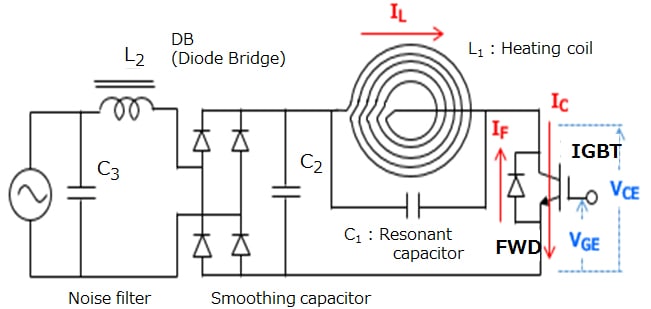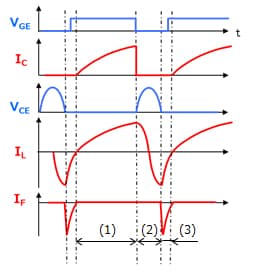- General Top
- SEMICONDUCTOR
- STORAGE
- COMPANY
-
My ToshibaSemicon
- Semiconductor Top
-
ApplicationsAutomotive
Body Electronics
xEV
In-Vehicle Infotainment
Advanced Driver-Assistance Systems (ADAS)
Chassis
IndustrialInfrastructure
BEMS/HEMS
Factory Automation
Commercial Equipment
Consumer/PersonalIoT Equipment
Healthcare
Wearable Device
Mobile
Computer Peripherals
-
ProductsAutomotive Devices
Discrete Semiconductor
Diodes
Transistors
Logic ICs
Analog Devices
Digital Devices
Wireless Devices
※
: Products list (parametric search)
Power SemiconductorsSiC Power Devices
※
: Products list (parametric search)
Isolators/Solid State RelaysPhotocouplers
Digital Isolators
Solid State Relays
Fiber Optic Transmitting Modules
※
: Products list (parametric search)
MOSFETsIGBTs/IEGTsBipolar Transistors※
: Products list (parametric search)
Diodes※
: Products list (parametric search)
MicrocontrollersMotor Driver ICsIntelligent Power ICs※
: Products list (parametric search)
Power Management ICsLinear ICs※
: Products list (parametric search)
General Purpose Logic ICsLinear Image SensorsOther Product ICsOther Product ICs
※
: Products list (parametric search)
-
Design & Development
-
Knowledge
- Where To Buy
- Part Number & Keyword Search
- Cross Reference Search
- Parametric Search
- Stock Check & Purchase
This webpage doesn't work with Internet Explorer. Please use the latest version of Google Chrome, Microsoft Edge, Mozilla Firefox or Safari.
require 3 characters or more. Search for multiple part numbers fromhere.
The information presented in this cross reference is based on TOSHIBA's selection criteria and should be treated as a suggestion only. Please carefully review the latest versions of all relevant information on the TOSHIBA products, including without limitation data sheets and validate all operating parameters of the TOSHIBA products to ensure that the suggested TOSHIBA products are truly compatible with your design and application.Please note that this cross reference is based on TOSHIBA's estimate of compatibility with other manufacturers' products, based on other manufacturers' published data, at the time the data was collected.TOSHIBA is not responsible for any incorrect or incomplete information. Information is subject to change at any time without notice.
require 3 characters or more.
Please explain the operation of voltage-resonant soft switching of an IGBT.

Figure (a) shows the schematic of a voltage-resonant induction cooktop as an application example of soft switching. Figure (b) shows its operation and waveforms.
In the circuit of Figure (a), when the IGBT turns on, current flows through the heating coil (L1). When the IGBT turns off, L1 and C1 go into resonance, causing sinusoidal voltage to be applied to the IGBT. The direction of resonance between L1 and C1 reverses, causing the C1 voltage to offset the C2 voltage. When the C1 voltage exceeds the C2 voltage, current begins to flow through the C1-C2-FWD-C1 loop. During this period, the collector-emitter voltage of the IGBT is equal to the forward voltage (VF) of the freewheeling diode (FWD), which is almost zero. At this time, the IGBT turns back on. As a result, current flows through the heating coil (L1) from the input side again. This sequence is repeated.
A voltage-resonant circuit is inexpensive because it does not require many components. However, when a system needs a high power capacity, an IGBT with very high withstand voltage is required so as to handle high resonance voltage. Therefore, a voltage-resonant circuit is used in many induction home appliances with a capacity of up to 1.5 kW at 100 VAC and up to 3 kW at 200 VAC. The smoothing capacitor (C2) on the input side has low capacitance because it receives electric power during a single pulse period. The voltage across C2 has a full-sine waveform, leading to a high power factor on the input side. Therefore, a voltage-resonant circuit eliminates the need for a power factor correction (PFC) circuit.

- The IGBT turns on.
Collector current flows via L1. - The IGBT turns off.
L1 and C1 go into resonance, causing voltage to increase. - The FWD conducts.
The energy stored in C1 flows back to the power supply via the FWD. An “on” signal is applied to the IGBT when the resonance voltage drops below the reference voltage.
Steps 1 to 3 are repeated.

